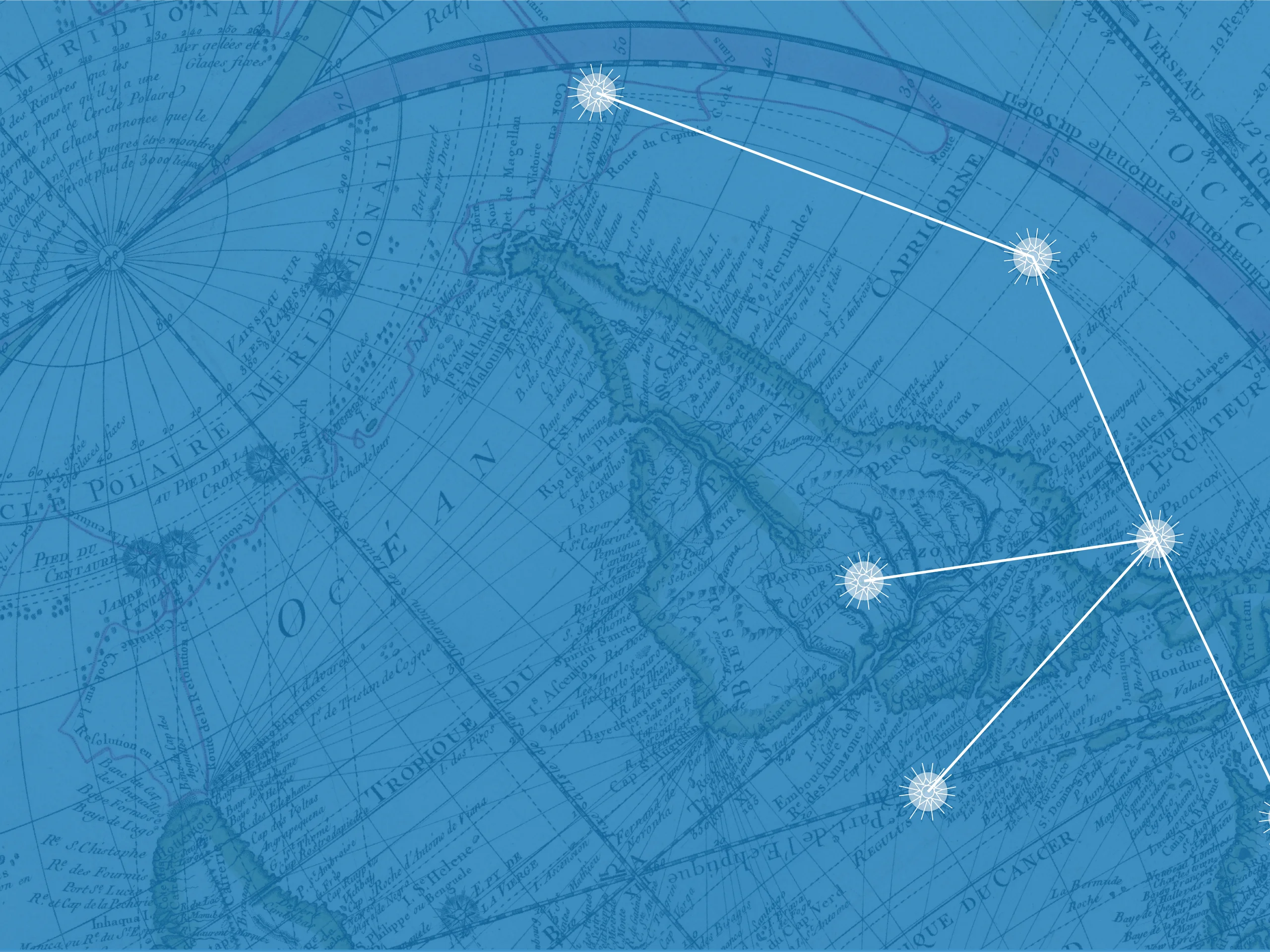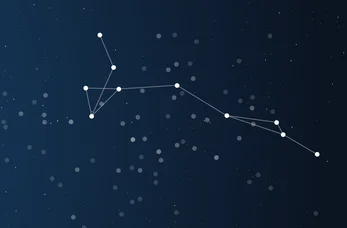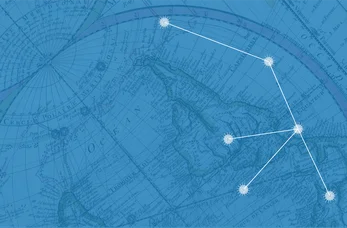
Constellations: Reimagining Celestial Histories in the Early Americas
"Those who first invented and then named the constellations were storytellers. Tracing an imaginary line between a cluster of stars gave them an image and an identity. The stars threaded on that line were like events threaded on a narrative. Imagining the constellations did not of course change the stars, nor did it change the black emptiness that surrounds them. What it changed was the way people read the night sky."
— John Berger
Here are the rules of the game: the library is the cosmos, its books are the stars, and we, as their readers, are celestial observers. At a distance, with instruments and conditions that are limited, our gazes travel, intermingle, pause, hesitate, and continue their trajectories, unraveling the unknown or perhaps encountering new outlines amongst the pages. The challenge is to place ourselves amongst a certain number of books, discover relationships, and create groups of objects – constellations – that speak to one another. These are the structural metaphors of the digital exhibition Constellations: Reimagining Celestial Histories in the Early Americas at the John Carter Brown Library, as we present to the public nearly 90 objects from its collections.
At first glance, the exhibition appears to have as its central theme the history of astronomy in the Americas. Or perhaps, even before that, is it not a history of the relationship of communities throughout the Americas with the heavens? Or better still, a history of the American skies? Choosing any of these as a central question – among many other possibilities – would imply distinct and not necessarily compatible propositions. Accepting incompatibilities, failing to resolve these tensions, and refusing to offer a particular response to a single dominant query is the vision that inspires Constellations and the histories that are recounted through it.
Our constellations are unexpected groupings, unstable and changing objects that testify to the distinct meanings that the heavens revealed for the Americas, from the Americas, within the Americas. We invite you to contemplate these skies with us.
Curators:
Nydia Pineda (University of California, San Diego) and Thomás Haddad (Universidade de São Paulo)
Executive Production:
Pedro Germano Leal (The John Carter Brown Library)
Specialist Consultants:
Laura Bland (University of Houston) - Seventeenth century comet tracts
Guillaume Candela (Center for the Study of the Early Modern World, Brown University) - Tupí-Guaraní language materials
Ana Díaz (Universidad Nacional Autónoma de México) - Nahuatl language materials
Virginia Iommi (Pontificia Universidad Católica de Valparaíso, Chile) - Celestial images
Antonio Neme Castillo (Universidad Nacional Autónoma de México) - Data visualization and analysis
Andrés Vélez Posada (Universidad EAFIT, Colombia) - Early modern cosmography
Data Analysis and Website Programming (Immersive Experience):
Sergio Mota (Instituto de Matemáticas Aplicadas y Sistemas, Universidad Nacional Autónoma de México)
Santiago Rodríguez (Facultad de Matemáticas, Universidad Autónoma de Yucatán)
Alejandro García (Facultad de Matemáticas, Universidad Autónoma de Yucatán)
Artistic Contributor and Consultant:
Ale de la Puente (Sistema Nacional de Creadores, México)
Video Production:
Sabrina Almandoz
Hugo Magaña
Lalo Santoyo
Support
Digitization of items for this exhibition has been generously supported by the R. David Parsons Fund for Digital Exploration. Programming support was received from Robert N. Gordon (in memoriam) and the Calouste Gulbenkian Foundation.

